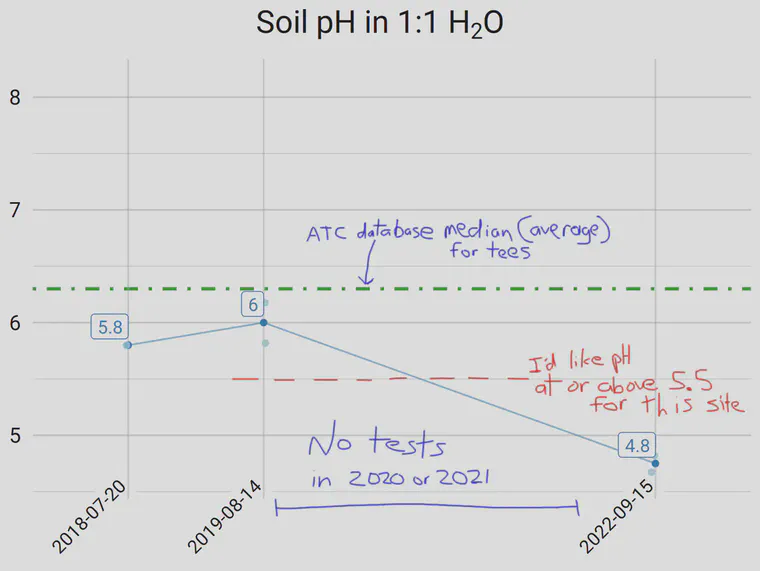One reason why I recommend annual soil testing of sand rootzones
I recommend annual soil testing of professionally-managed turfgrass grown on sand rootzones. For turf growing in soil, I don’t mind testing every two or three years. But sand rootzones usually aren’t very well buffered and important soil properties can change rapidly.
The results in this chart, from the golf course tee surfaces from one of ATC’s soil testing clients, illustrates why I recommend annual testing.

These are test results from a golf course with bermudagrass (Cynodon) tees and a year round growing season. Nitrogen fertilizer is acidifying. Precipitation is acidifying. Irrigation often adds alkalinity. For the most vigorous turf growth, and to allow for plenty of soil microbial activity—thatch breakdown—and to minimize any risk of soluble aluminum toxicity to the roots, the soil pH should be maintained at 5.5 or above.
With annual testing, it is likely that the drop in soil pH would have been detected. There would have been a downward trend in 2020 and 2021, and it is likely that lime applications could have been made to keep the soil pH from dropping to the current average level of 4.8.